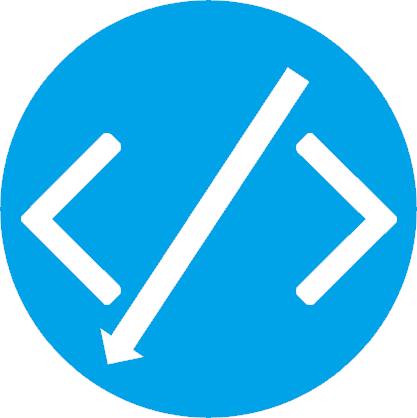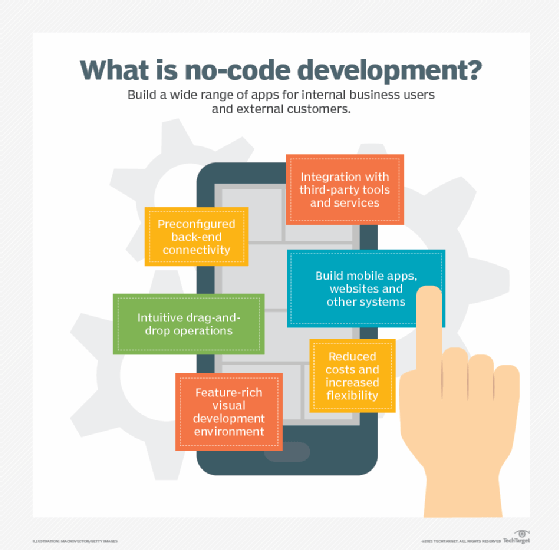Best Info For Selecting Low-code platforms for application development
Best Info For Selecting Low-code platforms for application development
Blog Article
The Accessibility Of Low-Code Applications Is One Of The Main Advantages.
Due to a range of important factors, Low-Code Application Development is available to non-developers. These are referred to as "citizen designers."
Drag-and-Drop Builders: Low-code platforms feature drag-and-drop interfaces that allow non-developers to create applications visually without writing code. This makes development more accessible to those without technical backgrounds.
WYSIWYG editors Editors that use WYSIWYG: These "What You See Is What You Get" editors let users build interfaces and workflows that are similar to the final product. This makes it much easier to learn and use.
Simple design of Workflow and Logic
Visual Workflow Modeling: Users are able to create business processes and application logic using visual flowcharts and models that are more user-friendly than conventional coding techniques.
Pre-built Logic components: Low-code platforms include logic components that have been pre-built (e.g. conditional statements and loops) that can be configured easily, reducing the requirement for complicated coding.
Reusable Templates and Components
Template libraries that are pre-built: Numerous low-code platforms have a library of the most commonly used types of applications, allowing non-developers a solid base to build upon and then alter.
Reusable widgets and modules: The development of web pages is made simpler by using reusable components and modules. This eliminates the necessity for a deep technical understanding.
Guided Development and Tutorials:
Step-by-Step Instructions Platforms typically provide tutorials that are on screen, guided development paths as well as other tools to assist people who are not developers to create applications.
Interactive Tutorials: Interactive, hands-on tutorials help users learn by doing, increasing their knowledge and confidence using the platform.
Integration with Existing Tool:
Seamless Integration: Low-code platforms have been designed to integrate easily with the existing business tools and systems (e.g. CRM, ERP and ERP) which allows non-developers to build applications that fit with their existing workflows.
APIs and Connectors: APIs built-in and connectors let non-developers and users to easily connect applications to external services, without the need for complex programming.
Collaboration Features:
Team Collaboration Features, like real time collaboration and shared workspaces, help professionals and non-developers to work together effectively.
Access control based on Role: Non developers can be assigned roles and access levels. This lets them participate in the development process without compromising security or functionality.
Automated Tests and Debugging
Low-code platform often comes with integrated testing and debugging tools that simplifies the process. Developers who are not developers can now verify that their app is working correctly.
Error highlighting: The platform provides information on issues and suggestions to guide non-developers.
In general, low-code app development has the ability to make development more accessible to everyone. This is an important benefit for developers who are not. Platforms that use low-code empower business users by offering them an intuitive, visually and logical tools. They can then actively take part in the process of developing and maintaining applications. See the most popular Low-code Platform for application development for website advice including jdbc server, stored sql procedures, rad development, app dev platform, build with docker, developing mobile apps, rapid applications, app dev platform, microsoft azure sql, develop web application and more.
Low-Code Application Development Offers Numerous Advantages In Terms Of Cost-Effectiveness
Low-code application creation offers many advantages in terms of cost-effectiveness. Businesses trying to cut costs can take advantage of this method while still delivering high-quality applications. Here are the top benefits: Reduced Development Costs:
Lower Coding Requirements: Low Coding platforms remove the need to code by hand, saving developers both time and money. Also, it means less costs for labor.
We require fewer resources for developers: Programming with low-code is more efficient and quicker, so fewer developers with specialized skills are needed. This can dramatically reduce the cost of hiring and staffing.
Time to market faster:
Development speed up Visual tools for development and pre-built parts provided by platforms that use low-code allow rapid design of applications, which allows firms to bring their products to market faster. This could lead to more rapid growth in revenue and enhance the competitive position of their products.
Rapid prototyping allows businesses to quickly design and test prototypes, which can cut down the amount of time needed in the development phase and allowing for faster iterations based on user feedback.
Lower Maintenance Costs
The modular architecture and standardized components of apps developed using low-code platforms makes them simpler to maintain. The ongoing maintenance and support costs are cut.
Automated Updates - Many low-code platforms can be adapted to handling updates and patches in a manner that's both secure and timely. This means there is no need for manual intervention.
Efficient Resource Utilization:
Contributions by Non-Developers Low-code platforms allow non-developers and business users to be involved in the development process. This makes it possible for companies to benefit from the expertise of a broad range of employees.
IT departments can concentrate on Strategic Initiatives: Instead of getting bogged down by routine development tasks, IT departments are able concentrate their energies on strategic initiatives to increase the efficiency and productivity of their departments.
Modular Pricing Models that Scale:
Subscription Pricing: Many platforms that use low-code provide flexible pricing models that are based on subscriptions that can be scaled in accordance with the amount of usage. This allows businesses to match their spending to their actual needs and increase.
Pay-as-you-go: Certain platforms offer pay-as you-go options. This lets businesses only pay for resources they actually use. This is especially useful for small businesses and startups that have limited funds.
Reduce the cost of third-party software:
Low-code platforms usually come with functions that are integrated, eliminating the requirement to purchase additional software or tools. This can save you cash on subscriptions and licensing fees.
Integrations pre-built: These pre-built systems and services can be integrated with popular services, which eliminates the need for custom-developed software and saves both time and money.
Increased ROI
More efficient return on investment (ROI): By the combination of rapid development, lower costs and a shorter time to the market, companies can get an increase in ROI for their applications.
Improved Agility. Businesses can swiftly adapt to changing market conditions and requirements of customers and ensure that they remain relevant. They also can profit from new business opportunities as they occur.
Costs of training are lower:
User-Friendly Interfaces: The simple, user-friendly interfaces of low-code platforms reduce the learning curve for new users, eliminating the requirement for lengthy training programs.
Accessible Resources. Many low-code platforms provide comprehensive training material including tutorials, training, and community support. They make it less necessary to undergo formal training, which can be costly.
Collaboration Streamlined:
Improved Collaboration Tools Collaboration tools are integrated into the workflow. This allows more effective communication between team members and a reduction in project overhead.
Unified Development Environment. A single, unified software development environment can streamline processes and decrease the complexity and expense of managing multiple software and platforms.
Overall, the cost effectiveness of software development using low-code can be attributed to its ability to reduce the cost of maintenance and development and increase time to market and optimize the use of resources and offer flexible pricing models. These elements provide huge economic rewards for businesses. Low-code is a fantastic option for businesses that want to make the most of their budgets, but also develop robust, scalable and top-quality software. View the most popular Legacy application modernization with Low-code for blog info including low code development platforms, application modernization software, app development platform, developing mobile apps, multiplatform mobile app development, build with docker, build a docker container, application development platforms, app modernization, develop cross platform mobile app and more.
Community And Support From The Vendor Are Two Benefits Of Low Code Development For Applications.
Low-code platforms provide significant benefits in terms of community and vendor support Both of which are vital to an effective implementation, maintenance and improvement of software. Here are the top benefits:Vendor support
Comprehensive Technical Support:
Support Teams Dedicated to You: A lot of low-code platforms have access to support teams that can assist in technical problems, troubleshooting and help, making sure that any problems are resolved promptly.
24/7 Support Availability: Some companies provide 24/7 support that is especially beneficial for global businesses operating across different time zones.
Training and Onboarding
Vendors will often offer user-friendly programs including tutorials or webinars. They might also offer training courses for certification.
Many vendors provide personalized onboarding that helps customers to make use of their platform effectively and adapt it to the needs of their customers.
Regular updates and enhancements
Continuous Improvement: Low code platform vendors provide regular updates that include new features, security patches, and enhancements to performance. This ensures that the platform will always be up-to-date and secure.
Feedback Integration: A lot of vendors incorporate user input in their process of development. This ensures that the platform can adapt to the evolving demands and needs of its users.
Comprehensive Documentation:
Detailled Documentation: Comprehensive and well-organized documentation is typically available that covers everything from basics to advanced customization, which assists users in finding solutions on their own.
API References: API documentation is detailed and helps developers to integrate the platform with other systems, as well as customize their applications.
Consulting and Professional Services
Expert Consultation: Vendors frequently offer consulting services to assist with strategic planning as well as design of architecture and complicated implementations, to ensure that users are able to use the platform to its fullest potential.
Custom Development Services - Certain companies offer custom development services for certain features or integrations not available out of the box.
Community Support for the Community
Active User Groups:
Forums and Discussion Boards: Many low-code platforms have vibrant online communities in which users can seek answers, discuss solutions, and collaborate on the best practices.
User Groups and Meetups Local and virtual user groups and meetups offer opportunities for networking, learning and sharing experiences with other users.
Collaboration and sharing of knowledge:
Community-Contributed Resources: Users often share templates, modules, and extensions that they have developed, which can be reused or adapted by others, accelerating development and innovation.
Crowdsourced Problem-Solving: The collective wisdom and experience of a group can be an invaluable help to resolve issues and discover creative solutions to complicated problems.
Learning and Development
Community-led training: Many communities provide webinars, workshops, and training sessions that are led by experts in the field.
Online Tutorials and Courses Community members make and provide tutorials, online classes and step-by-step guides. This helps improve the learning tools that are accessible to the users.
Feedback and Influence
Product Feedback Channels: Community forums usually include channels for providing feedback to the vendor that can affect the creation of new features or improvements.
Beta Testing Programs: Members of the community who are active could be able to participate in beta testing programs, which gives them early access to new features as well as a say in influencing the evolution of the platform.
Recognition and Support:
Community Recognition Programs - A lot of vendors offer recognition programs to recognize the efforts of the active members of their community such as MVP (Most Valuable Professionals) programs.
Peer support: Members of the community are often willing to offer peer-support, offering their expertise and advice to those who may be less knowledgeable. They help create a supportive environment through encouraging the spirit of collaboration and building a community.
The overall result of a solid vendor with active and engaged communities. They provide a comprehensive environment for support of low-code applications development. This ensures that users have the knowledge, resources, as well as collaborative opportunities, they need to be able to build and deploy their applications.